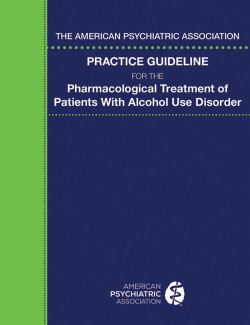Applying interventions designed to reduce and manage the symptoms of substance use disorders.
Treatment
Predictors of Treatment Response Following Parent Management Training: Child, Context, and Therapy Factors
Terje Gunnar Ogden , Kristine Amlund Hagen Parent Management Training- the Oregon model (PMTO) was introduced as a treatment alternative to families in both child welfare services and child psychiatric out-patient clinics in Norway, in 2001...
The American Psychiatric Association Practice Guideline for the Pharmacological Treatment of Patients with Alcohol Use Disorder
Rationale The goal of this guideline is to improve the quality of care and treatment outcomes for patients with alcohol use disorder (AUD), as defined by DSM-5 (American Psychiatric Association 2013). The guideline focuses specifically on...

Universal School-Based Implementation of Screening Brief Intervention and Referral to Treatment to Reduce and Prevent Alcohol, Marijuana, Tobacco, and Other Drug Use
Abstract Screening, Brief Intervention, and Referral to Treatment (SBIRT) is an evidence-based approach to reducing substance use in adolescents. An emerging literature shows the promise of school-based SBIRT. However, most school-based...
International Conference on Opioids
The 2018 International Conference on Opioids (ICOO 2018) has assembled the best and brightest minds in opioid analgesics who will explore the challenges of using opioids to treat pain. They will present the latest research, real world knowledge, and practical solutions aimed at improving patient outcomes and reducing risk to both your patients and your practice.
Workshop: Working Effectively with People Who Use Drugs
A free workshop aimed at GPs, Allied Health Practitioners, CCG leads for drugs, commissioners, consultants, service managers and other interested parties.
The workshop will explore:
